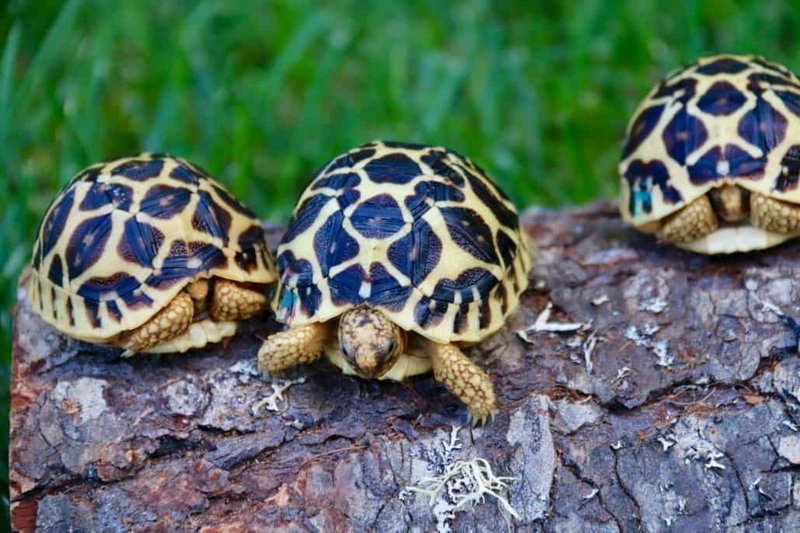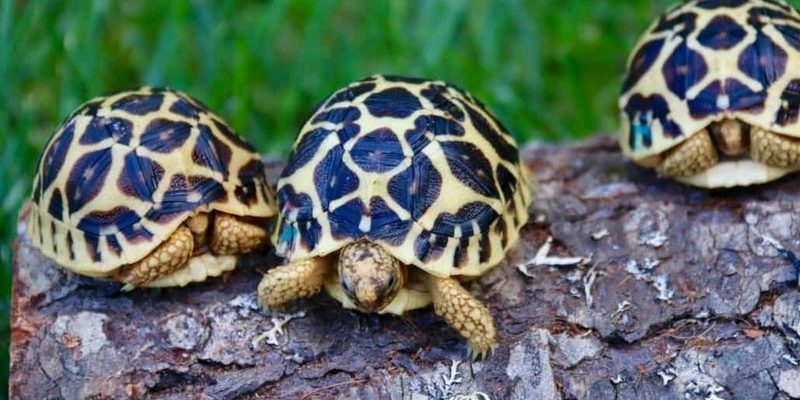
Think of identifying the Indian star tortoise like solving a mystery. You need to pay attention to the clues—like the star patterns on their shells, their size, and even their behavior. Each of these elements helps paint a complete picture. So grab a cup of coffee, and let’s dive into the fascinating world of the Indian star tortoise!
Understanding the Indian Star Tortoise
The Indian star tortoise (Geochelone elegans) is a species native to the dry areas of India and Sri Lanka. Known for its striking shell that resembles a starburst pattern, this tortoise is not only visually appealing but also holds interesting traits worth knowing. Their shells are typically black with yellow lines radiating outward, hence the name “star” tortoise.
These tortoises can grow to about 8 to 12 inches in size and weigh around 4 to 6 pounds. Their dome-shaped shells are one of the primary identifiers. Unlike many other tortoises, Indian star tortoises are known for their active and curious nature. They can often be spotted wandering around, which makes identifying them just a bit easier.
Here’s the thing: habitat plays a crucial role in their identification. If you ever find one, it’s likely hanging out in scrubby, dry areas or even in grasslands. Now, let’s break down the key elements that will help you confidently identify them.
Shell Patterns and Colors
One of the most striking features of the Indian star tortoise is its shell. The unique star pattern is a captivating combination of black and yellow. Each tortoise has its own unique pattern, much like a fingerprint in humans.
When you’re looking at these tortoises, notice the radiating lines that stretch from the center of the shell outwards. These patterns are typically most pronounced in adults, while younger tortoises might not have as defined a pattern. If you see a tortoise with an almost geometric design, you’re likely looking at an Indian star tortoise.
Another thing to consider is the overall shape. Unlike some other tortoises that have flatter shells, the Indian star tortoise has more of a dome shape. This shape helps in identifying them—especially when you’re viewing them from the side.
Size and Age Indicators
Size can tell you a lot about a tortoise. In general, Indian star tortoises grow to be anywhere between 8 to 12 inches long. However, size alone isn’t a foolproof identifier because younger tortoises can be significantly smaller.
When trying to gauge the age of an Indian star tortoise, look for growth rings on the shell. Much like tree rings, these growth rings can give you an approximation of how old the tortoise is. It’s important to remember that growth patterns can vary based on their diet and living conditions.
As the tortoise ages, it becomes heavier and the shell’s colors may become more vibrant. If you’re comparing a younger tortoise to an adult, the differences in size, weight, and shell color are typically quite noticeable.
Behavior and Habitat
Behavioral traits can also help you identify an Indian star tortoise. These tortoises tend to be quite active and curious, especially when it comes to exploring their environment. Unlike some other tortoise species that may be more reclusive, the Indian star tortoise can often be seen ambulating around their habitat.
In their natural environment, they thrive in dry areas, usually found in parts of India and Sri Lanka. They enjoy a diet rich in grass, leafy greens, and a variety of fruits. If you observe one in the wild or in captivity, you might notice how they interact with their surroundings, constantly on the lookout for food or a new spot to sunbathe.
If you’re trying to identify one, simply watching their behavior can offer clues. If they seem inquisitive and are moving around instead of staying tucked in their shell, it’s likely you’re observing an Indian star tortoise.
Distinguishing From Similar Species
You might be wondering how to tell an Indian star tortoise apart from other similar species. Several tortoises share a similar appearance, but there are key differences to look for. For example, the sulcata tortoise has a much flatter shell and a more robust body. Their color patterns also vary from the Indian star tortoise’s distinctive star pattern.
Another common comparison is with the radiated tortoise, which also sports a star-patterned shell. However, the radiated tortoise has a slightly different shape and tends to have more pronounced yellow colors.
When identifying, take note of the region where you spot the tortoise. If you’re in India or Sri Lanka and see a star-patterned tortoise with a dome shell, chances are high it’s the Indian star tortoise.
Conservation Status and Importance
The Indian star tortoise is currently classified as vulnerable, which raises some red flags for conservation efforts. Habitat loss and illegal poaching have significantly impacted their population. Understanding how to identify them is not just a fun exercise; it’s also crucial for conservationists and enthusiasts alike.
By recognizing these tortoises, you’re participating in a larger effort to promote awareness about their plight. Knowing the signs of their existence can empower you to help protect their habitat. Whether it’s contributing to local conservation efforts or simply spreading the word, every action counts.
In short, awareness is key to ensuring that future generations can appreciate the beauty of the Indian star tortoise.
Identifying an Indian star tortoise is an exciting journey filled with unique details. From their eye-catching shell patterns and curious behaviors to the habitats they prefer, each aspect adds to the beautiful tapestry of their existence. By understanding these traits, you’re not only improving your identification skills but also contributing to the protection of this fascinating species.
So next time you’re out in nature or visiting a reptile exhibit, keep an eye out for these incredible tortoises. Remember the clues we’ve discussed, and take the time to appreciate their beauty and significance. Here’s to many more encounters with the incredible Indian star tortoise!

